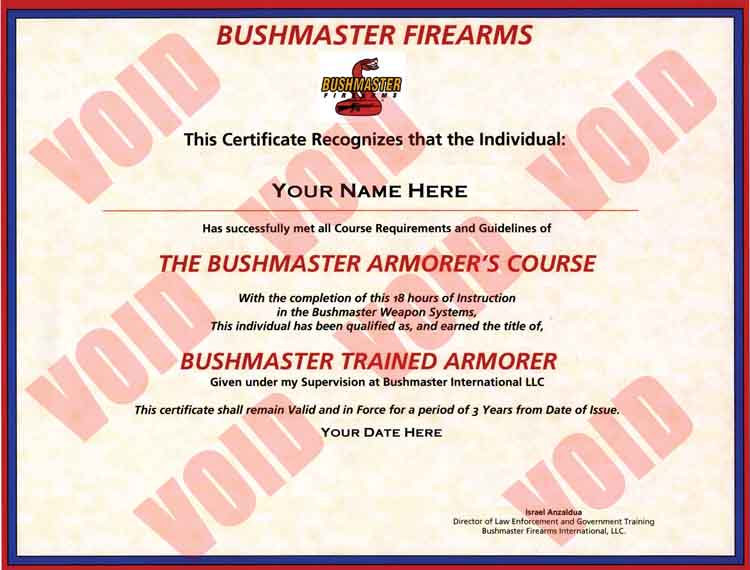The saga of this most innovative rifle begins in late 1990 when the noted firearms editor, William B. Edwards, found a rifle shoved behind a divider in the museum section of the engineering department at Winchester. The museum curator, Tom Hall, allowed Mr. Edwards to research the then “unknown” piece. What they discovered leads to a most interesting story of secret weapons and lost opportunities. The research led to an article published in the NRA Journal for the American Arms Collector, Man at Arms, (Vol. 13, No. 1, January/February 1991), titled The Burton Balloon Buster by William B. Edwards. Mr. Edwards emphatically asserted that this was indeed the first true assault rifle; developed in 1917. The father of this remarkable weapon was none other than Frank B. Burton, the noted engineer who worked with John Browning on the first BAR.
By definition, an assault rifle should be an in-line stock, with selective fire, and be chambered for an intermediate round. The Winchester Machine Rifle, hereafter referred to as WMR, fits all the parameters for an assault rifle, though designed in 1916, according to Konrad F. Schreier, Jr. as he wrote about it in ARMAX, The Journal of the Cody Firearms Museum (Vol. III, No. 1, 1990). It came about as an effort to defeat German observation balloons in World War I. The deadly weakness of these balloons was the Germans were forced to use flammable hydrogen to lift them into the air and all it would take is one tracer round to ignite the hydrogen. This is the reason Mr. Burton developed his machine rifle. He had developed the whole line of semiautomatic rifles that Winchester marketed, known as the 1907 Self Loading Rifles. The cartridge he chose was the .351 SLR – it was not a pistol cartridge, nor a rifle round: it was a true intermediate cartridge. He built his weapon based upon a .345 SLR with a 173 grain bullet as the projectile was large enough to contain an incendiary charge.
Description of the Self Loading Rifle by Mr. Burton
The rifle was designed with an in-line stock that required a high front sight. It fired from an open bolt, for cooling. It came with two barrels; one for aircraft use and another for assault purposes, after it had been removed from the Scarff mount in the back seat of the plane. The latter had a bayonet lug. The most unusual feature of the design was two vertical forty round magazines that entered the receiver at a 60 degree angle. The magazines would feed one at a time, and then pulled upward a short distance to allow the second magazine to be pushed down into a feeding position in the weapon. Due to the fact that it is an in-line rifle that recoils straight into the shoulder, it requires a pistol grip to counteract the torqueing motion caused by the twist of the projectile. The grip is quite ample that contains a conventional trigger and a second trigger that protrudes below the guard that is the safety. This lower trigger must be pulled at the same time as the upper trigger and is the only safety.

The concept of a straight blowback weapon firing from an open bolt was relatively new in 1916, and so was the idea of an automatic weapon. Mr. Burton seemed to have a handle on the concept, for he utilized a large recoil spring that went all the way into the rear of the stock. A cocking handle protrudes beneath the receiver. The whole gun is reminiscent of a German MG 15. There is a distinct ring around the receiver to fit in the Scarff mount of the observer’s seat in an airplane. Once removed from the mount there is a special barrel equipped with a sling swivel and bayonet lug for assault use. Burton must have given careful thought for its application. There is a horizontal foregrip to protect the fingers of the shooter, very much like the BAR.

The Winchester .345 Machine Rifle Cartridge
What is so remarkable is the cartridge Mr. Burton designed for his unique rifle. It is almost as if he could see into the future for the need of an assault rifle round. He took a bullet and shell combination that he had designed, the .351 SLR, and made it a vehicle for an incendiary or tracer round. He took a brass case of 1.375 inch length and .375 inch neck diameter. To this he added 18 grains of 1908 Bear powder, and he topped it with a .348 inch, 173 grain, pointed, cupronickel-jacketed bullet to produce a “Balloon Busting” package that would move out at 1,849 fps. It reminds one of the new Hornady “Thumper”.450 Bushmaster.
One wonders why this advanced weapon was never produced. It was tested at the Springfield Armory but no results have been found. Perhaps it was ahead of its time and the tactics of the day could not see a use for it.
(The author would like to thank Donald G. Thomas of Marietta, Georgia for his efforts in assisting in research on this gun and its ammunition.)
Specifications
Caliber: .345 WSLR
Length: 45.5 inches
Weight: 10 pounds
Barrel length: 25 inches
Magazine: 80-rounds, dual 40-round box
Muzzle vel.: 1,849 fps
Action: Blowback
Ejection: Through bottom
Cyclic Rate: 800 rpm
| This article first appeared in Small Arms Review V14N3 (December 2010) |












